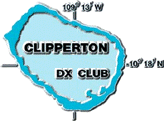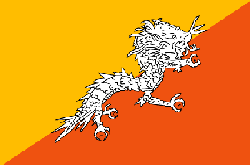
History
of ham radio
in Bhutan
DXCC
: A5 (ex-AC5), Continent: Asie,
Situation: 27N 90E, WW Locator : NL47 & NL57,
Allocation ITU: A5A-A5Z,
Zone WAZ: 22, Zone ITU:41

 |
History
of ham radio DXCC
: A5 (ex-AC5), Continent: Asie, |
 |
|
Secluded Kingdom of the Himalayas, Bhutan
has remained for many years one of the most wanted countries in the
amateur radio world. Amateur radio has had a legal frame since May 2000,
however amateur activity started in 1955…
Early Activities: "Able Charlie Five Papa November
calling"... We are in November 1955, in Rida in the western province
of Wangduephodrang, and this was the first amateur radio call from Bhutan
on the occasion of King Jigme Dorji Wangchuck's travel to the East of the
country. The callsign AC5PN was that of Chawna, an Indian national from
the state of Mizoram in North East India. He was working for the kingdom
of Bhutan and was the first amateur to be active from Bhutan, allowing the
country to join the world of amateur radio communication.
Then from 1963 to 1965, it was with the turn of American Gus Browning to operate from Bhutan. Through AC5PN, he proposed his services to the royal authorities in Bhutan for the training, and maintenance and repairs of army radio equipment and obtained the required authorizations.
Two years later, he was again in Bhutan and, travelling through 8 of the 21 provinces of the country, he used the callsigns AC0H to AC9H from February to June 1965.
This expedition was sponsored by Hammarlund, which explains the letter "H" at the end of the callsigns. At the time of this Himalayan trip, two other callsigns were also used, AC3H from Sikkim and AC4H from Tibet. To activate so many provinces so distant from each other, at a time when no roads yet existed is really astonishing. A Few Sporadic Activities After 1981, Bhutan was again silent, as all amateur radio activity was prohibited, and became the second most wanted DXCC country. Tibet had ceased to exist in 1974 and Sikkim in 1975. Bhutan remained a valid Himalayan country, but a law was required to legalize radio amateur and it was not a priority for the government.
Jim VK9NS has to be praised for his efforts to get amateur radio activity recognised by the royal authorities of Bhutan. He was invited to go to Bhutan in 1990 and once there, obtained the authorization to transmit from 22nd March to 10th April with the callsign A51JS. In 1994, he was again invited and used the callsign A51MOC from the ministry of telecommunications. Let ‘s also acknowledge the efforts of Zorro JH1AJT, who made a demonstration in February 1995 also at the ministry of telecommunications in Thimphu with the callsign code A51MOC, as well as A51/JH1AJT together with three other Japanese radio hams. The Revival of Amateur Radio : The Bhutan Telecommunications Act was signed in 1999 and came into force in April 2000. Amateur radio activity was again authorized in Bhutan. The first expedition of this new era was A52A. The team operated from the Pine Wood hotel in Thimphu where over 80,000 QSOs were made. The international team led by Glenn Johnson W0GJ included Jaari OH2BU, Harry RA3AUU, Andy UA3AB, Mark ON4WW, James 9V1YC, Yuu JA3IG, Mac JA3USA, Jin JF1IST, Al K3VN, Bob K4UEE, Don N1DG, Wes W3WL, Vince K5VT and Mark N0MJ.
In
Bhutan at the end of March, Jim VK9NS started operating from Paro a few
days after A52A with the callsign A51JS then A52JS. Jim made 15,000 QSOs. A french ham team : In September 2000, the second expedition was French. After four years of effort and the invaluable assistance of Françoise Pommaret, the French ethnologist specialist of Bhutan and president of the association "Les Amis du Bhoutan” (Friends of Bhutan) A52 French Ham (A52FH) was active from Bhutan.
During the first few days of their stay, they became friends with Yeshey Dorji who later obtained his official licence A51AA. The team helped to install the first "Ham Center" in Thimphu. The “Ham Center” was inaugurated on 12th September with the presence of Thinley Dorji, Director of the Bhutan Telecommunications Agency (BTA), the A52FH team and a Bhutanese television crew. The first QSOs with the callsign A51AA were made by Gérard F2VX and Vincent G0LMX. Peter stayed on with the callsign A52TT and other amateurs followed. At the end of the year, a Japanese team was in Paro from 27th October to 3rd November. The operators were A52XX (JA1PCY), A52DX (JF1PJK), A52B (JR7TEQ), A52JA (JK1AFI) and A52W (JH1NBN). They took part in the CQ WW SSB. In December, Charlie K4VUD was A52UD, and Jani YB0US was A52AP from the Thimphu Ham Center
First Bhutanese Amateurs : During his stay, Glenn used his expertise of many years as ARRL trainer to train seven operators and to conduct on 29th January 2001 the first amateur radio exam session in Bhutan.
Today :
In
2001, the Bhutan Telecommunications Authority (BTA) decided to install
several radio-clubs spread over the whole country.
In Thimphu, the Bhutan Amateur Radio Operator Club (BARC), callsign
A50A, was inaugurated on 26th October To
mark this event, an American team again led by Glenn W0GJ was in Thimphu
from 23rd October to 1st November. For the contest they were joined by Bhutanese operators, Ambika Gurung A51YL, Wangpo Dorji A51WD, Yeshey Dorji A51AA, Kesang Namgyel A51KC, Parop Kinley A51PK, Pema Rinzen A51PR and Dorji Yeshey A51UD. On 30th January 30 2002, the second club station - the "Polytechnic Amateur Radio operator Club" (PARK) A50B - was inaugurated in Phuentsholing at the border with India. Two other radio-clubs were also created, one in Phuentsholing with the callsign A50C, the other at the Thimphu high school with the callsign A50D. In
January 2002, Ray HS0/G3NOM and his XYL E21UHL were in Bhutan for a month.
They were active from the radio-club A50A where Ray used the callsign
A52OM. During his stay, he
trained 16 new Bhutanese operators. In September 2002, John KP2A was A52DX. In 2003, Glenn W0GJ went back to Bhutan in February and stayed for a month, again working as a surgeon at the Thimphu hospital. His callsign was A51A and he took part in the CQ WW RTTY and ARRL CW contests. In September, Hawk SM5AQD and Pelle SM7EHU were A52SM, and in December 2003, Dane S57DX was A52CQ. In 2004, W4PRO is A52PRO at the end of March and early April, before continuing his trip to Nepal.
From
23rd October to 12th November 2004, four years after
A52FH, a team of the French Clipperton DX Club was again in Bhutan with
the callsign A52CDX. For the
first part of their trip until 1st November, Gérard F2VX,
Jean-Louis F9DK, Vincent G0LMX and Alain F5LMJ stayed at the
"Ham Center" of Yeshey A51AA in Thimphu, where they
received the visit of Wangpo A51WD and Ambika A51YL. This was done at the beginning of 2005 when Wangpo A51WD installed two new club stations in the valley of Shemgang in Shingkhar (A50E) and Bardo (A50F). Two additional radio-clubs are expected to be installed soon in other provinces.
Amateur Radio Callsigns in Bhutan : Their
format is "A5NXX", where A5 is the international prefix of
Bhutan (for example, the registration numbers of the two Druk-Air planes
which serve Paro are A5-RGE and A5-RGF).
"N" is a number that identifies the type of licence, 0
for the radio-clubs, 1 for the local operators, 2 for the foreign
operators. As
a special privilege, whereas the prefix "A51" is normally
assigned only to local operators, two foreigners have received on a purely
honorary basis and in recognition for their contribution to the
development of radio-amateurism in Bhutan the callsigns A51A and A51B.
They are respectively Zorro, Yasuo Miyazawa JH1AJT (A51A) and Glenn
Johnson W0GJ (A51B). A51MOC is the official callsign of the ministry of telecommunications. Acknowledgments : Many thanks to Yeshey Dorji A51AA, Wolf OE1WHC (QSL Collection on the Web at www.qsl.at), and Gérard F2VX and Jean-Michel F6AJA (http://lesnouvellesdx.free.fr), for allowing us to reproduce QSL cards from their collections Alain F5LMJ (ex-A52FH, ex-A52CDX ) |
||||||||||||||||||||||||||||||||||||||||||||||||||||||||||||||||||||